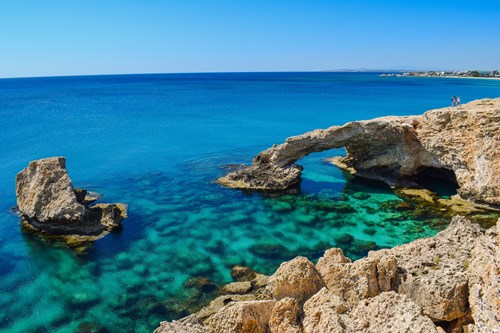Sustainability planning for destinations – identifying your audiences
Tourist destinations around the world are realising that if they want to continue to reap the benefits of tourism for many years to come, they need to make a step to a more sustainable model. In order to achieve this, there must be a clear understanding of the audience groups to involve and engage in the process.
By Lindsey Hall
As a destination, you need to protect what makes you unique, and to ensure that your cultural identity doesn’t become eroded as you welcome in more tourists to enjoy it.
We need to make sure that we’re protecting the natural resources that we take so many benefits from. For example, if people come from all over Europe to dive and snorkel in your coves, reefs and caves, then these need protection from the potential impacts that diving can have on them. This ensures that you’ll keep attracting tourists for many more years.

You must also be receptive to the needs of your local community. If the economic benefits of tourism don’t sufficiently balance out the challenges that it brings, changes need to be made.
So, we’ve recognised the importance of making the tourism model more sustainable, but now what?
Identifying your audiences
Who do you need to communicate with in order to make your tourist destination more sustainable? Whose involvement and support do you need to achieve this change? What behaviours do you need to change?
There are three core groups to be considered when planning your sustainability programme and communications strategy:
- Businesses
- Local community
- Tourists
We also recommend making a further split, identifying children and youths as separate audiences within both the local and tourist communities.
Next, let’s break down what we wish to achieve with each of these groups, and consider how to communicate with each of them in turn.
Getting business support
“Selling” a move towards sustainability is a challenge for any destination where there are multiple agents involved in delivering the complete tourist experience. From hotels and self-catering establishments, to bars and restaurants, to the wide range of activity and experiential services, there are many conflicting business interests to be aligned to your new sustainable direction.
And some of the changes that you’d like these establishments to make may bring them economic benefits in the long-term, but require some effort to achieve in the short-term…
Sustainable destinations have had the most success on this front when they have initiated a continuous dialogue with business leaders, listening to their concerns and involving them in the solutions. This is where any sustainability and communications programme should begin.
Engaging your visitors
When we consider visitors’ attitudes towards sustainability, current studies show that only 10% of tourists identify themselves as caring for the planet, 60% want to know how it will benefit them, and 30% simply don’t care about sustainability, and just want their holidays to be easy and fun.
With this in mind, messaging that simply focuses on sustainability, without telling people how it will benefit them and make their visit more enjoyable, easy or relaxed will only reach c. 10% of your potential audience.
But that doesn’t mean that sustainability messages and products can’t engage. It’s just a case of selling the benefits that they can bring, rather than focusing on sustainability itself.
Involving your community
Tourist destinations often suffer from a feeling of discontent amongst the local community that the tourist services and assets are not for their own use and that the benefits that tourism brings the community do not balance out the costs.
By creating an environment for dialogue, both parties can start to learn each other’s challenges, which over time allows for understanding to grow. Citizens will gain a greater sense of the limitations of growth and the responsibilities that fall upon everyone in the destination to protect its natural or cultural heritage, and the destination will learn how to deliver benefits sustainably to local people.
The most successful and sustainable initiatives have been developed with local engagement and support, recognising that local people are the heart of sustainable tourism.
Speaking to your younger citizens
Children and youths (both local residents and tourists) should be given particular attention when developing sustainable communications. Your efforts in sustainability will only have lasting success if the next generation takes on from where we have left off and drives it forward.
In many cases, adults also learn best (and most willingly) when they do so alongside their children. Information is presented in simple terminology for children, but for some adults, this is also what is required to understand the message. Their children’s enthusiasm to learn and their questioning nature, helps to increase the parents’ engagement.
Check out our next article, effective strategies for communicating sustainability, for more advice on how to increase engagement and support for your sustainability programme.
Need help communicating with your audiences? Contact us today and we'll create a communications plan that will get you the engagement necessary to make your destination a leader in sustainable tourism.
Tags
- sustainable communications plan
- sustainable destination
- sustainable tourism
- sustainable action plan
Share
ShareTweetPin it+1